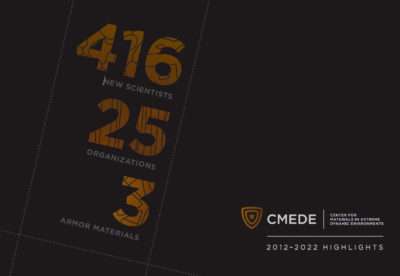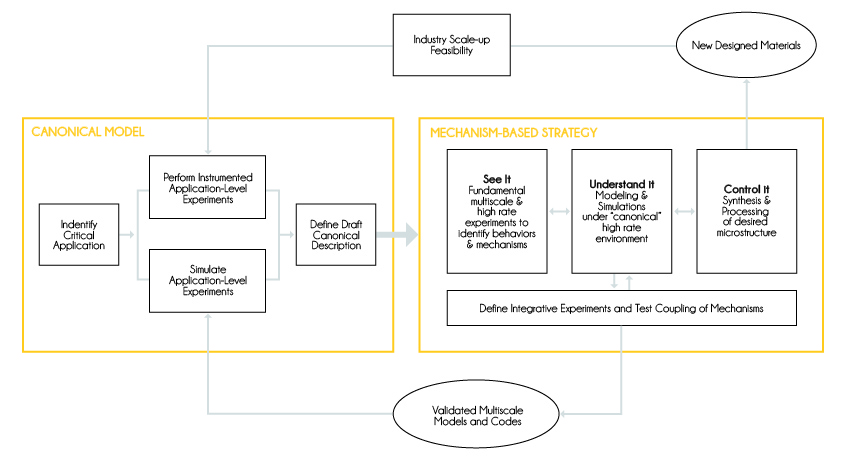Materials in Extreme Dynamic Environments (MEDE)
Overview and Successes of MEDE Program

|
Structure
The University of Delaware’s Center for Composite Materials (CCM) along with Johns Hopkins University (JHU), California Institute of Technology (Caltech), Rutgers University and the Army Research Laboratory (ARL) comprise the Consortium Management Committee (CMC), which is the final decision authority for the MEDE Collaborative Research Alliance (CRA).
CCM joins experts from across the country in a collaboration that includes engineers from national laboratories, private industry, and universities to help the U.S. Army develop new lightweight materials to better protect soldiers and vehicles. The work is being carried out through the Hopkins Extreme Materials Institute (HEMI), which has been awarded up to $90 million for this effort. The program just completed a five-year initial study, and has been renewed for an additional five years.
The focus of the MEDE program is to advance the fundamental understanding of
materials in high-stress and high-strain-rate regimes with the goal of developing a
materials-by-design capability for these extreme environment.
Program Approach
The objectives of the MEDE program are to develop the technical and workforce capability to design, create, and optimize novel material systems that exhibit revolutionary performance in extreme dynamic environments.
The objective is not necessarily to produce a specific material system that is optimized for a specific range of applications, but rather to produce a way of thinking that will allow the design of lightweight protective material systems that can be used for extreme dynamic environments.
To achieve the MEDE program objectives, research activities are focused on a materials-by-design process for composite and polymeric materials involving a canonical model and a mechanism-based strategy. This involves the development of new computational tools whose predictive capabilities span length scales from the atomistic level to the macroscopic building block (single filament-yarn-single composite ply) as well as time scales ranging from 10-1-10-9 seconds. In order to obtain model input parameters and provide model validation, new experimental techniques are being developed to identify and quantify rate-dependent failure modes for both composite and polymer textile materials. The intent is that insights generated through this effort are used to guide the optimization of material composition (molecular architecture, fiber/Resin adhesion, composite microstructure) and process techniques to achieve new material systems with dynamic mechanical properties that significantly exceed those of the state of the art.
This program brings the very latest cutting edge computational and experimental technologies to CCM’s long history of a “Materials by Design” philosophy.








